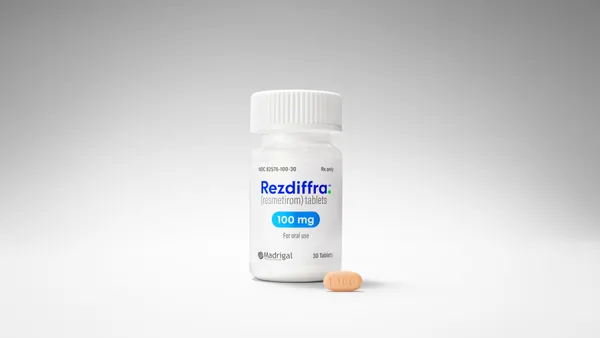22 October 2008 VIEW on ESolutions EMARKETING These days, just about every pharmaceutical brand has some kind of online presence. Depending on category and audience, it may range from a basic website to a complex online footprint that leverages multimedia and social networks. Often people review only basic website traffic to measure the success of their online initiatives. But that leaves a lot of other data sitting on the table. Analyzing other data sources will give you a more accurate picture of your campaign effectiveness. The Real Challenge … Syncing Your Data Many marketers use multiple online tactics to promote their websites. Search engine marketing (SEM), banner ads, and social networks can all drive significant traffic. Here’s the real challenge — if marketers only measure site traffic, they see only one aspect of campaign performance. They miss out on some truly useful insights regarding what actually influences their target audiences. In some cases, marketers cause behavioral changes. In other cases, changes are out of their control. Because of these multiple channels of influence, synchronizing data analysis has become much more complex. Most new media channels have proprietary data capture systems, so there’s no shortage of quantifiable information. Merging data sets together to generate a true ROI is a mix of art and science. Art and Science of Data Analysis Think of data as one big bucket of water. Media channels are the multiple hoses that continually feed water into that bucket. Digital marketing can be very complex, so art must be applied to the science of interpreting numbers. Marketers need a talented, experienced analyst who can distinguish between channels and attribute conversions to the correct source. Website traffic logs can be analyzed with WebTrends. SEM dashboards from Google, Yahoo, and MSN can provide keyword data. For display banners, reports from vendors like Atlas Media. Plus, Facebook, MySpace, and YouTube, all of which have proprietary reporting, can be leveraged. Toss in traffic drivers outside of their control, like blogs, news stories,TV, and radio, and marketers have a big bucket of data. Unfortunately, these data are interconnected and can be difficult to attribute to one clean source. Beyond Basic Analysis By looking at site traffic, marketers verify their spend. That is, the more money spent, the more traffic. Eventually they can reach saturation in a particular channel, which leads to diminishing returns on spend. Specifically, spending twice as much money will not necessarily get twice as much qualified traffic. Plus, upon entering the market and spending money the overall online marketplace in both price and traffic is affected. Data must be reviewed beyond basic traffic reports. This enables marketers to optimize media spend, including off line options like radio and TV. It’s important to drive the right traffic to your site, so look at the quality of the leads, not just the sheer volume of traffic. You want people who are ready to hear your brand message and take the next step in terms of treatment. Merging Offline Data Sources Many campaigns include online and offline promotions. If marketers have baseline data, they can measure the lift from DTC channels. For example, radio can raise awareness, which usually drives people to the web for information. In overall traffic, the regional lift from a radio campaign can be measured. Also, it’s important to evaluate how the radio campaign drives qualified leads. Review the specific keywords in the ad copy and determine whether there is a lift from these words in SEM or natural traffic and analyze incoming traffic to see if conversions increase in specific radio markets. Incoming Traffic As much as we, as marketers, would like to control incoming traffic, there are many variables that affect traffic sources. For example, social media cannot be underestimated. People are dis cussing your brand with or without you. News is picked up and shared online, and that can drive site surges. Conversation in the blogosphere can directly affect your traffic and conversion patterns. If the conversation in social media is moving qualified leads, then the SEM campaigns can be modified to keep attracting that audience. Ongoing monitoring and analysis help marketers understand changes in their data. Putting Theory Into Practice Pulling data from different channels together can be daunting, especially at the beginning. Analysis will help marketers optimize investment and decide which tactics drive the most qualified traffic. They can then use this information to optimize their campaigns across multiple channels. Marketers shouldn’t be afraid to press their agency partners to dig deeper into the data to determine which tactics best serve their brand goals. QI, the full service digital agency of CommonHealth, launched the first pharmaceutical presence on MySpace and has been active in researching and leveraging social networks since 2003. For more information, visit commonhealth.com/qi. The Importance of Data Analysis Boris Kushkuley, Ph.D., General Manager Buddy Scalera, Vice President, Interactive Content and Market Research Qi, part of CommonHealth Merging data sets together to generate a true ROI is a mix of art and science. Whether you’re looking to position your brand in a crowded marketplace or give it a completely new look, we’ve got just the tools you need to fill any gaps and get all your brand’s parts moving in the right direction. As your full service marketing partner, our interdisciplinary approach aligns all your brand’s activities to keep them moving toward one common goal. Our proprietary methodology provides one of a kind, reality based insights to help you get to the root of your audience, while our best in class talent creates results driven campaigns to keep your brand in line. Want to set your brand straight? Call us to schedule an appointment: 973.352.1000. Real . Aligned . There’s nothing common about us commonhealth.com
An article from


The Importance of Data Analysis
Filed Under:
Commercialization








